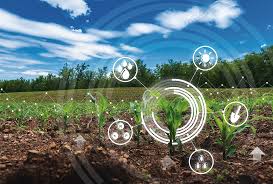The agricultural industry has entered a new era, one defined by precision, accuracy, and efficiency. Crop acreage data plays a central role in this transformation, offering farmers essential insights for optimizing resources and maximizing yield. Precision farming, which relies heavily on detailed data to manage farming practices with pinpoint accuracy, has proven to be a game-changer in addressing modern agricultural challenges, such as unpredictable climate patterns, increasing input costs, and the need for sustainable practices. In this context, crop acreage data is not only valuable for planning and resource allocation but also supports robust crop risk management.
What is Precision Farming?
Precision farming, also known as precision agriculture, leverages technology and data to optimize agricultural practices. The main goal of precision farming is to enhance crop productivity, minimize waste, and create sustainable farming practices through the effective use of data. This approach integrates technologies like GPS mapping, IoT devices, drones, and advanced data analytics to monitor and manage crops, soil, and weather patterns.
The Role of Crop Acreage Data in Precision Farming
Crop acreage data provides a detailed map of the distribution and size of cultivated areas, offering critical insights that help farmers make data-driven decisions. By analyzing crop acreage data, farmers gain a better understanding of the spatial distribution of crops, which is essential for planning field management strategies, applying inputs efficiently, and anticipating potential risks.
- Enhanced Field Management
With accurate acreage data, farmers can divide fields into manageable units and implement zone-specific strategies based on soil type, topography, and crop requirements. This targeted approach allows for precise irrigation, fertilization, and pest control, maximizing yield and improving field productivity. - Informed Crop Rotation and Soil Health Management
Crop rotation is vital to maintaining soil health, preventing pest accumulation, and enhancing overall productivity. Acreage data helps farmers monitor crop patterns across multiple seasons, allowing them to make informed decisions about which crops to plant next. For instance, alternating leguminous crops like soybeans with cereals helps replenish soil nutrients, resulting in healthier soils and higher yields. - Optimal Resource Allocation
With accurate data on the acreage under cultivation, farmers can plan resource allocation more effectively. Knowing the exact area to be managed allows for better budgeting and efficient use of seeds, fertilizers, pesticides, and water. This ensures that resources are neither underutilized nor wasted, supporting cost-effective farming. - Improved Crop Risk Management
In agriculture, risk is inherent due to factors like weather unpredictability, pest infestations, and disease outbreaks. Crop acreage data supports crop risk management by allowing farmers to monitor fields in real time and prepare for potential threats. For instance, if pest patterns are detected in specific acreage, farmers can focus pest management efforts in those areas to prevent larger outbreaks. Acreage data can also help in diversifying crops strategically across fields to reduce the impact of crop-specific risks.
Key Technologies in Gathering Crop Acreage Data for Precision Farming
To fully harness the power of crop acreage data, various technologies are employed in precision farming:
- Satellite Imagery and Remote Sensing
Satellite technology has revolutionized acreage data collection. Using multispectral imagery, satellites provide real-time data on crop health, water usage, and soil conditions. Remote sensing also enables the detection of crop acreage over large areas, supporting crop monitoring and providing a broad overview of the entire farm landscape. - Drones and Aerial Imaging
Drones offer high-resolution aerial imagery that helps capture precise acreage data even for smaller fields. This technology can create detailed maps of crop acreage, identify problem areas, and assess crop health. Drones are particularly useful in monitoring crop progress and providing farmers with updated acreage data throughout the growing season. - GIS (Geographic Information Systems)
GIS is a mapping tool that combines spatial and non-spatial data, making it easier for farmers to visualize and analyze acreage data. By layering information on topography, soil health, and crop acreage, GIS supports informed decision-making and effective planning for each crop cycle. - IoT Sensors
Internet of Things (IoT) devices placed in fields collect data on soil moisture, temperature, and humidity. When combined with acreage data, this information offers a complete picture of environmental conditions affecting crops, allowing farmers to make real-time adjustments that align with specific acreage requirements. - Machine Learning and AI Models
Advanced analytics tools can process vast amounts of data, using machine learning to generate predictions based on historical acreage patterns. For instance, AI models can predict pest infestations or crop diseases based on past data, allowing farmers to take preventive measures across affected acreage.
Applications of Crop Acreage Data in Precision Farming
The ability to access real-time acreage data has opened up several applications in precision farming that directly impact productivity and yield:
- Precision Planting
Crop acreage data allows for precision planting, where seeds are planted at optimized distances, depths, and patterns across different field zones. This ensures that each plant has adequate space, nutrients, and water, maximizing yield potential. - Customizable Irrigation
By mapping acreage with crop types and soil conditions, farmers can implement customizable irrigation systems that cater to the specific needs of each section of the field. This conserves water, reduces runoff, and supports healthier crop growth. - Pest and Disease Management
Using crop acreage data, farmers can pinpoint areas where pests and diseases are likely to strike. This allows for targeted intervention, reducing pesticide use and focusing treatments on high-risk acreage. By preventing outbreaks before they spread, farmers can protect their yield and ensure crop safety. - Yield Prediction and Financial Planning
Acreage data plays a crucial role in yield prediction models, helping farmers estimate potential output based on current field conditions and historical patterns. This information is essential for financial planning, as it provides a realistic view of expected returns and helps manage risks associated with crop failures or low yields.
Crop Risk Management through Data-Driven Decisions
Data-driven decisions enabled by crop acreage information can significantly enhance crop risk management. Farmers can employ acreage data to devise strategies for mitigating risks associated with environmental factors, market fluctuations, and operational costs.
- Early Identification of Environmental Risks
With remote sensing and real-time monitoring, farmers can track weather patterns and environmental changes that may impact specific acreages. This allows for proactive risk management strategies, such as adjusting planting schedules or employing protective measures against drought or frost. - Diversification Strategies
Acreage data helps farmers assess field diversity and explore crop diversification as a risk management strategy. By planting multiple crop types across different acreages, farmers can reduce the impact of market volatility and minimize the risk of total crop failure due to weather extremes or pest infestations. - Efficient Response to Market Dynamics
Acreage data allows farmers to respond to market trends by adjusting crop areas based on demand. For instance, if a high demand for a particular crop is anticipated, farmers can increase the acreage dedicated to that crop, maximizing their returns and optimizing resource allocation.
Conclusion
The use of crop acreage data in precision farming has reshaped how farmers approach agriculture, allowing them to make data-driven decisions that enhance yield, conserve resources, and manage risks effectively. From optimizing planting and irrigation to developing robust crop risk management strategies, crop acreage data is essential to modern, sustainable farming practices. Precision farming continues to evolve, driven by technological advancements that offer new insights and tools for maximizing productivity. As data collection and analysis technologies become more accessible, the future of agriculture looks increasingly data-centric, promising improvements in both crop yield and environmental sustainability.
Keep an eye for more news & updates on ForbesZine!




